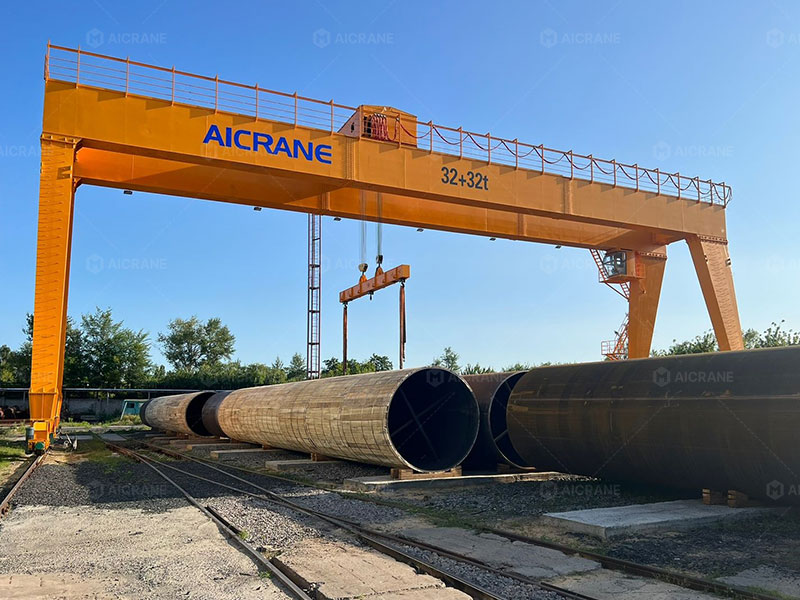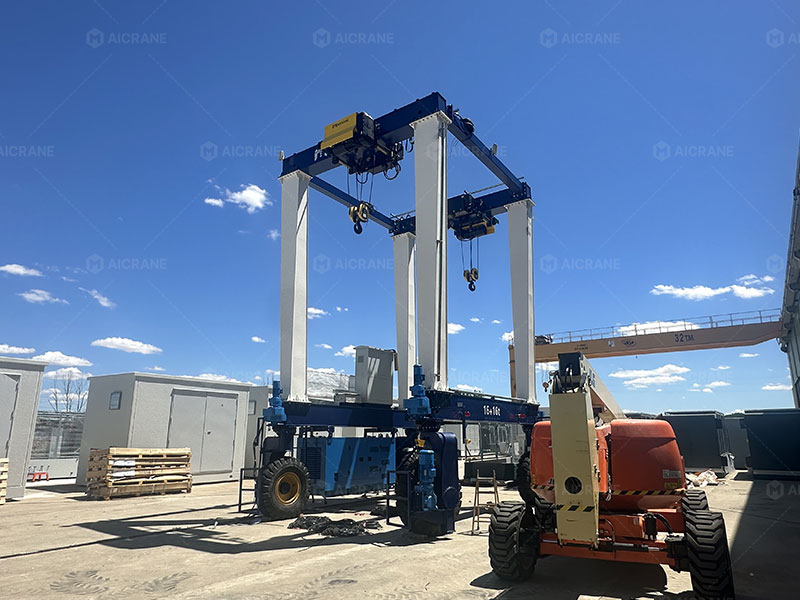In the era of Industry 4.0, predictive maintenance is transforming how industrial equipment, including gantry cranes, is managed. Traditionally, gantry crane maintenance followed reactive or scheduled models, which often resulted in unexpected breakdowns, inefficient servicing, or unnecessary downtime. With the integration of smart sensors, the game is changing – offering operators data-driven insights to anticipate and prevent failures before they occur.
This article explores the concept, components, implementation, and benefits of predictive maintenance using smart sensors on gantry crane for sale, and how this technology is revolutionizing crane management in ports, precast yards, warehouses, and heavy industries.

What Is Predictive Maintenance?
Predictive maintenance (PdM) is a proactive approach that relies on real-time data and analytics to forecast when equipment will require maintenance. Unlike preventive maintenance, which is performed on a set schedule, predictive maintenance aims to service machinery only when necessary, based on the actual condition of components.
In gantry crane operations, this means tracking the performance of motors, brakes, hoists, gearboxes, wheels, electrical systems, and structural components using smart sensors and applying AI-driven algorithms to assess their health.
Why Gantry Cranes Need Predictive Maintenance
Gantry cranes are critical assets in industries such as:
-
Port terminals (RTGs, RMGs)
-
Steel manufacturing
-
Precast concrete plants
-
Shipbuilding
-
Heavy equipment assembly
These cranes often operate under harsh conditions and lift heavy, high-value loads. Any unexpected breakdown can:
-
Halt operations and disrupt logistics
-
Damage cargo or equipment
-
Pose safety risks to personnel
-
Lead to expensive emergency repairs and replacements
Predictive maintenance minimizes these risks and enhances crane lifecycle performance.
How Smart Sensors Enable Predictive Maintenance
Smart sensors are the core enablers of predictive maintenance. These sensors monitor various crane parameters in real time and feed data into a centralized monitoring system or cloud platform. The system analyzes data trends and flags abnormal patterns or performance degradation.
Key Sensors Used in Gantry Cranes
| Sensor Type | Function |
|---|---|
| Vibration Sensors | Detect imbalances or wear in motors, hoists, gearboxes |
| Temperature Sensors | Monitor overheating in motors, brakes, or electrical panels |
| Load Sensors | Measure dynamic and static loads to detect overloads or strain |
| Strain Gauges | Identify stress or fatigue in crane structures and welds |
| Oil Quality Sensors | Assess contamination or degradation in gearbox or hydraulic fluids |
| Current and Voltage Sensors | Monitor electrical consumption and detect anomalies |
| Brake Wear Sensors | Track the wear of mechanical brake components |
| Wheel Alignment Sensors | Detect misalignment or wheel wear in rail or rubber tyred cranes |

Working Process of a Predictive Maintenance System
-
Data Collection:
Smart sensors installed on critical components gather real-time operational data (e.g., temperature, vibration, load). -
Data Transmission:
This data is transmitted via wired or wireless systems (Wi-Fi, Bluetooth, or 5G) to a central controller or cloud platform. -
Data Analysis:
AI and machine learning algorithms analyze the data to identify trends, usage patterns, and potential failure signs. -
Health Status Reports:
The system generates dashboards and reports showing component health, estimated lifespan, and recommended service schedules. -
Alerts and Notifications:
Maintenance teams are alerted when a component approaches a failure threshold or when performance deviates from norms. -
Maintenance Action:
Instead of routine checks, technicians focus efforts on components that require attention, reducing maintenance costs and improving uptime.
Key Benefits of Predictive Maintenance for Gantry Cranes
1. Reduced Downtime
By identifying wear and tear in advance, maintenance can be scheduled without interrupting operations. This minimizes unplanned stoppages.
2. Extended Equipment Lifespan
By servicing parts before critical failure, the crane’s components are preserved, extending their useful life and delaying capital expenditures.
3. Improved Safety
Detecting potential brake failure or structural fatigue before failure enhances worker safety and cargo protection.
4. Cost Savings
Predictive maintenance reduces emergency repair costs, unnecessary part replacements, and labor expenses for routine checks.
5. Better Resource Allocation
Technicians spend time on meaningful tasks rather than blanket inspections, improving workforce efficiency.
6. Data-Driven Decision Making
Real-time insights help facility managers make better decisions about maintenance budgets, spare parts procurement, and crane scheduling.
Implementation Considerations
A. Sensor Selection
The right combination of sensors must be chosen based on the crane type (e.g., rail mounted vs. rubber tyred), work duty (light, medium, or heavy duty gantry crane), and operational environment (e.g., port, indoor, offshore).
B. System Integration
Sensors must be compatible with the crane’s control system (PLC) and communication infrastructure. Integration with SCADA, CMMS, or ERP platforms can enable seamless asset management.
C. Data Storage and Processing
Choose between edge computing (data processing on-site) or cloud computing based on latency needs and data volume.
D. Cybersecurity
As cranes become IoT-enabled, protecting data and system access from cyber threats is essential.
E. Training and Change Management
Maintenance teams and operators must be trained to interpret data, trust system alerts, and shift from reactive habits to proactive planning.
Real-World Examples
-
European Container Terminal
A port in Rotterdam retrofitted its RTG cranes with vibration and temperature sensors. Within six months, the system identified failing motor bearings in two cranes, saving over $50,000 in unplanned repairs. -
Steel Fabrication Yard in India
A 50-ton double girder gantry crane used in beam handling began showing elevated gearbox temperature. Predictive analytics revealed oil contamination. Early replacement avoided catastrophic gearbox damage. -
Offshore Shipyard in South Korea
Heavy-duty gantry cranes equipped with strain gauges and load sensors detected micro-fatigue in cross girders, prompting reinforcement and eliminating safety risks.
Future Outlook
Predictive maintenance is evolving rapidly with advancements in:
-
AI-based anomaly detection that self-learns failure signatures
-
Digital twins for simulating crane health and performance
-
5G-enabled real-time data streaming
-
Integration with automated inspection drones and robotic inspectors
As AI and sensor technology become more affordable and scalable, predictive maintenance will become the standard approach in crane fleet management.
Conclusion
Smart sensors and predictive maintenance represent a powerful shift in how gantry cranes are maintained and operated. From reducing costs and improving safety to extending crane lifespan and enhancing operational continuity, the advantages are clear.
As competition and throughput demands increase, companies that adopt predictive maintenance early will position themselves as leaders in reliability, efficiency, and innovation in the material handling and logistics sectors.